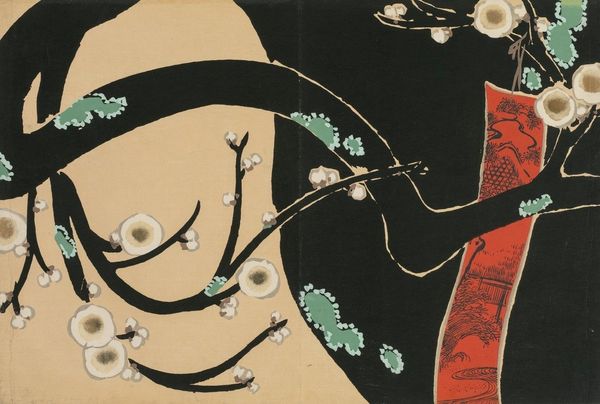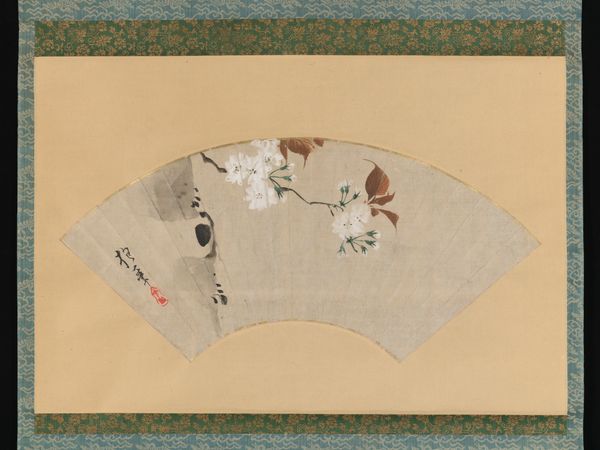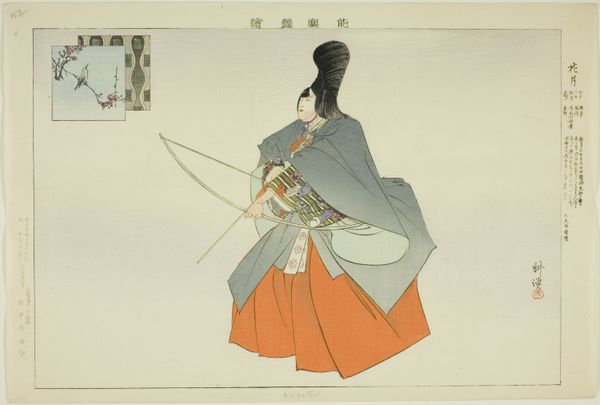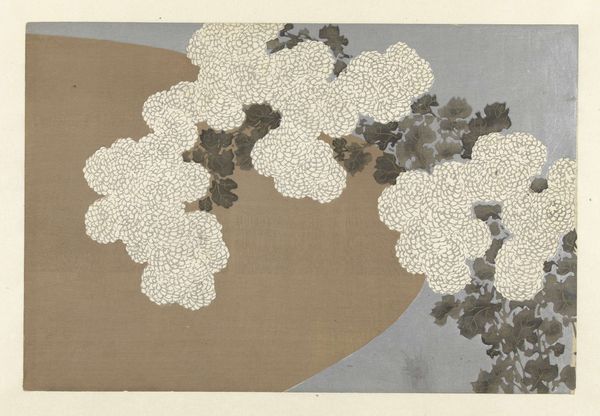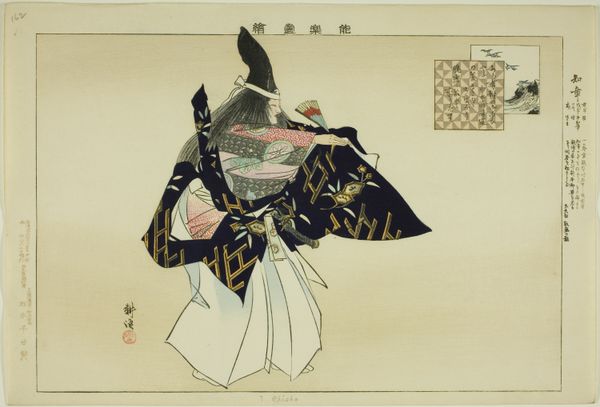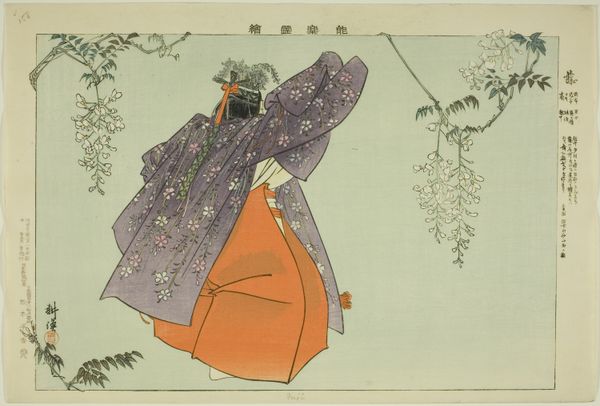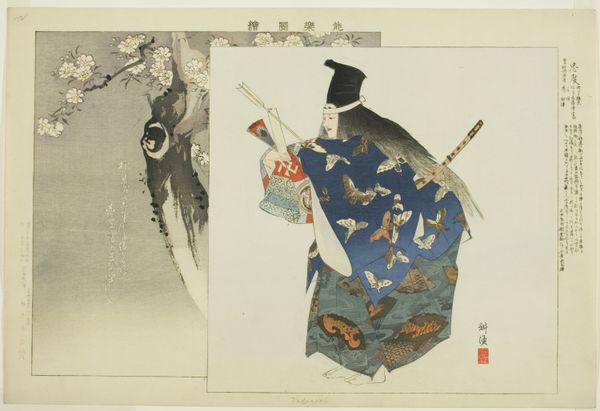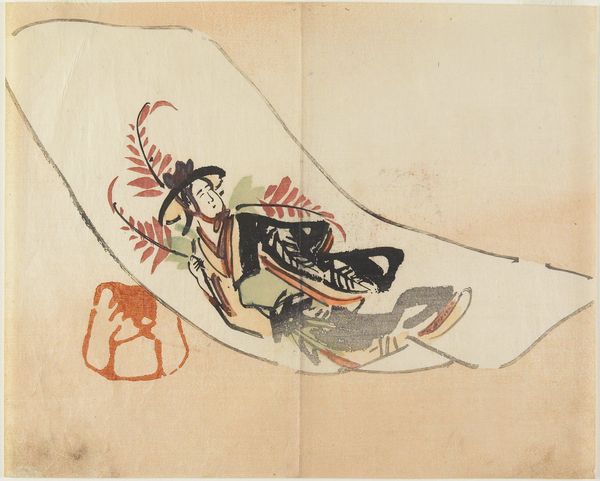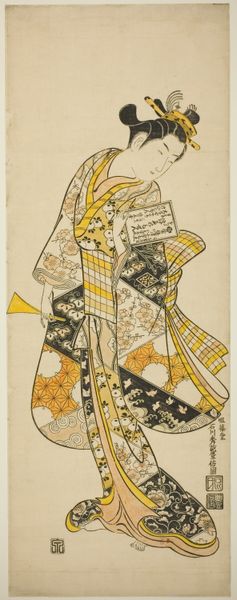
Shojo, from the series "Pictures of No Performances (Nogaku Zue)" 1898
0:00
0:00
Dimensions: Approx. 25.2 × 37.4 cm (10 × 14 4/3 in.)
Copyright: Public Domain
Curator: Immediately striking is the balance, how shapes and patterns interact to hold our gaze. There’s a stillness that almost contradicts the wild hair. Editor: You’re right. It's strangely hypnotic. We're looking at "Shojo, from the series Pictures of No Performances (Nogaku Zue)" by Tsukioka Kogyo, created in 1898. This woodblock print, now residing at the Art Institute of Chicago, offers us more than just an aesthetic experience. Curator: Absolutely. This piece really unpacks Shōjō folklore for me. It is deeply rooted in Japanese theatre and symbolism, with those mythical, jovial sea spirits often depicted reveling in sake. Kogyo doesn’t shy away from representing the ecstatic intoxication celebrated within the No tradition. Editor: Precisely! Notice how the vibrant reds and oranges, especially in the figure's robe and wild mane, clash somewhat against the serene backdrop, generating that compelling tension that initially grabbed me. It’s not a photorealistic piece. Curator: No, definitely not! Kogyo seems to consciously employ distortion as a potent emotional vehicle, exaggerating the features of Shojo to enhance his otherworldly mystique. Even the folds in the kimono or the details of the fan contribute to this elevated symbolic state. Editor: Tell me about the objects surrounding him: that vase, that glimpse of a monkey. Are they more than simple props? I see some clear diagonals moving from the upper-right to the lower-left side of the picture, too. Curator: Well, consider the scroll featuring a monkey; traditionally, the animal is a guardian against evil. Its inclusion possibly imbues Shojo with protection or further elevates him to almost sacred status. The sake jar, of course, implies his connection to merriment, good fortune, even revelatory intoxication! Editor: So it becomes this intersection of pleasure and sacred space. It's amazing how even a seemingly simple composition delivers layers of interwoven meaning through culturally specific metaphors. Curator: It underscores how we project emotional landscapes upon visual cues. And conversely how those symbolic languages, constantly shifting, retain cultural resonance over generations. Editor: In closing, the artwork highlights that tension beautifully—that intersection between tradition and expression. Curator: Indeed, prompting an experience beyond simple viewing, a genuine encounter with another facet of human consciousness.
Comments
No comments
Be the first to comment and join the conversation on the ultimate creative platform.


